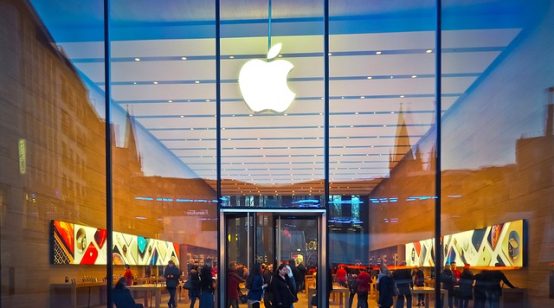
Sunday was a historic day for the Tadawul, Saudi Arabia’s 12-year-old stock exchange. Saudi Aramco announced that it will list up to three percent of the company on the exchange for private investors. Trading will start in December. Privatizing Saudi Aramco is a keystone of 34-year-old Saudi Crown Prince Mohammed bin Salman’s (MbS) plan to diversify the Saudi economy away from oil.
Since the 2016 announcement of the Kingdom’s Vision 2030, the financial world has worked itself into a frenzy about getting a piece of what would be the world’s largest private company. Yet the energy world has largely shrugged, instead showing more interest in Qatar, the small peninsula off the coast of Saudi Arabia.
In 2017, Qatar announced that it had lifted its self-imposed moratorium, initiated in 2005, on gas development. Now, the national company Qatargas is making final investment decisions for a consortium that will increase its liquefied natural gas (LNG) production from 77 million tons per year (mtpa) to 110 mtpa by 2024. This consortium is certain to include major international oil companies (majors) because the venture offers clear returns, a proven business model, participation shares, and a cleaner energy source that allows them to diversify their portfolios. The political risks associated with a youthful MbS only add to the calculation that Qatargas is a superior investment, even if Saudi Aramco will dominate headlines in the coming weeks.
Follow the majors
Qatargas has been developing the largest natural gas field on the planet, North Field, since 1999. Its first-mover advantage and low production costs made Qatar the world’s first large-scale LNG exporter. This success brought massive new volumes of LNG online into a market not entirely ready for them and led to the 2005 moratorium.
Qatar Petroleum owns a 70% stake in Qatargas, but majors Exxon Mobil (U.S.), Total (France), Shell (UK-Netherlands), and ConocoPhillips (U.S.) account for most of the remaining 30%. Exxon Mobil also played an integral role in building out North Field. These majors along with Eni (Italy) are considered frontrunners to participate in North Field’s expansion.
Meanwhile, no major has shown interest in Aramco’s privatization. For starters, it is a financial investment, which provides them no direction over strategy and operation. Fundamentally, Aramco is also a direct competitor and helping finance it would yield only symbolic good will. Even if it were a blue chip financial play, shareholders see risk in committing capital to an IPO that has faced a three-and-a-half year delay in implementation. What exactly are investors buying into? The majors will continue to invest in Saudi Arabia, of course. Total invested $1 billion in the Saudi midstream and downstream in February 2019. But they will shy away from helping finance the Saudi upstream.
In Qatar, meanwhile, the majors get direct participation shares in a proven business model that appears certain to play a central role in the global energy system moving forward.
Iranian setback
Qatar’s proven gas reserves stand at 843 trillion cubic feet (tcf) in 2019. Only Russia at 1,688 tcf and Iran at 1,194 tcf have more. While Russia is freely developing them, pipelines will remain its dominant mode of transport. Australia, currently the world’s largest LNG exporter, has only 114 tcf in reserves. Canada has 72 tcf and the United States has 438 tcf, both of whom consume much of this at home. Iran, in other words, is the only country that could potentially rival Qatar as an LNG exporter.
Yet Iran’s fortunes continue to sink. After the lifting of sanctions in 2015, Total and the China National Petroleum Corp. (CNPC) joined a $5-billion consortium to develop South Pars, which adjoins North Field and is the key to Iran’s LNG future. As U.S. President Donald Trump began threatening to reimpose sanctions after taking office, Total saw the writing on the wall. It offered Qatar Petroleum a 25% share in concessions in South Africa in February 2018 to bolster its chances of participating in North Field’s expansion. It then quit South Pars in August 2018, three months before sanctions were, in fact, reimposed. CNPC initially assumed Total’s share, but also pulled out last month due to U.S. pressure.
Iran, for now, pledges to move forward with South Pars, the central project of which is slated to come online by 2021. Three days after CNPC’s departure, it even announced the discovery of a huge new field in southern Iran. Iran has also noticeably improved its standing in gasoline refining and petrochemicals. But it’s foolhardy to bet that it will develop a robust gas-exporting industry without international partners, if the last four decades are any indication.
It’s the energy transition, stupid
Aramco’s privatization is so long past due and comes at a time when oil is politically toxic. Natural gas is cheaper and can allow the world to transition to a cleaner fuel mix. Qatargas thus carries less environmental, financial, and political risk than Aramco.
But the company also carries less leadership risk. MbS may flash a charming smile when he visits Facebook’s headquarters, but has made many questionable decisions. We hear little these days about the ongoing GCC-Egyptian embargo of Qatar, which proved largely ineffective. Vision 2030 has thus far been more bells and whistles than real economic restructuring. His war in Yemen has been a disaster. The killing of journalist Jamal Khashoggi in Istanbul damaged his moral standing. Qatari leadership, in contrast, is silent and staid, something investors appreciate.
Sheikh Zaki Yamani, Saudi Arabia’s technocratic oil minister from 1962 to 1986, once quipped: “The Stone Age did not end for lack of stone, and the Oil Age will end long before the world runs out of oil.” Oil is far from over. The energy transition and the superiority of investing in gas, however, are encouraging signs that its heyday is passing.
Photo: Lijmiliya LNG Carrier Qatargas; Credit: Wikimedia Commons.





